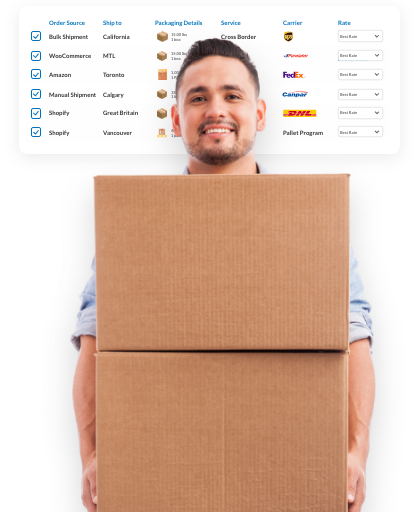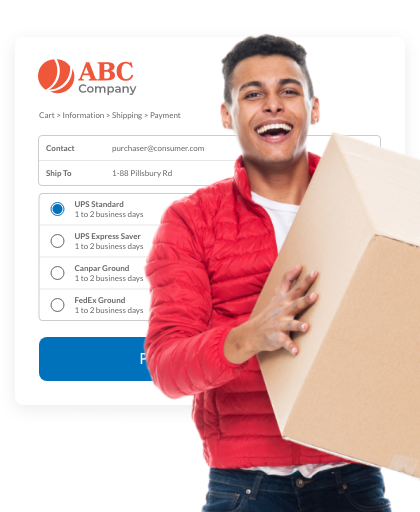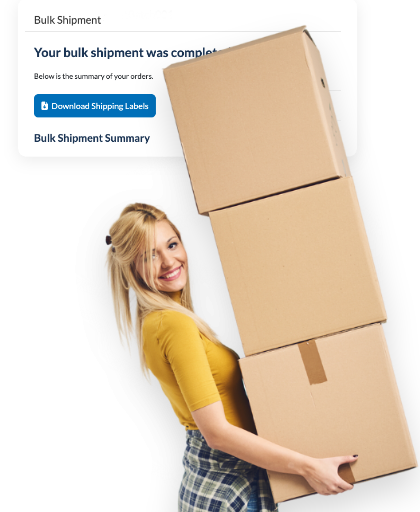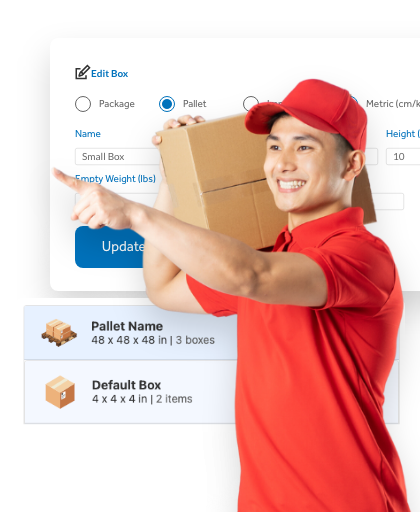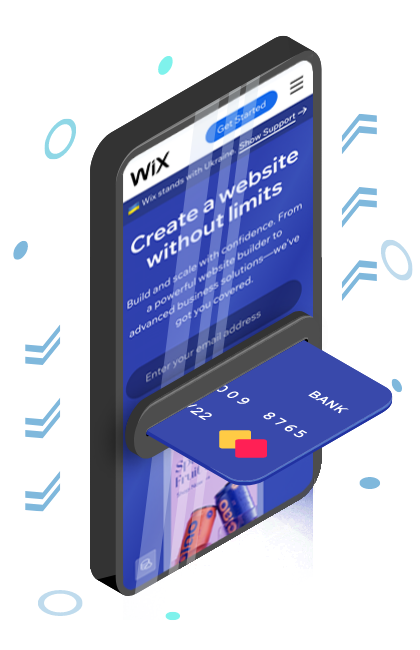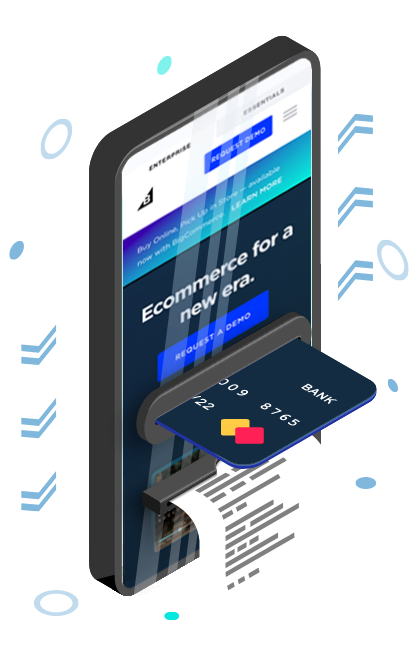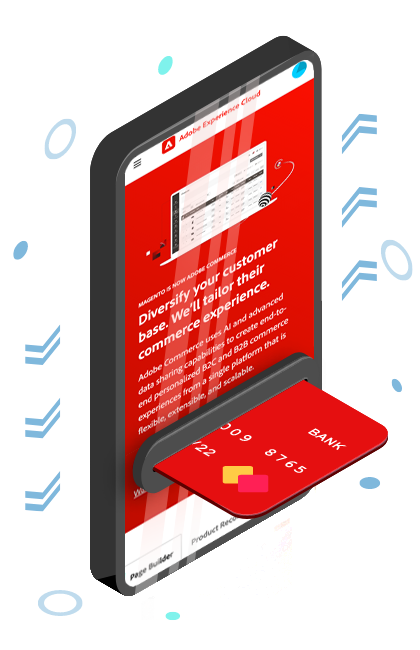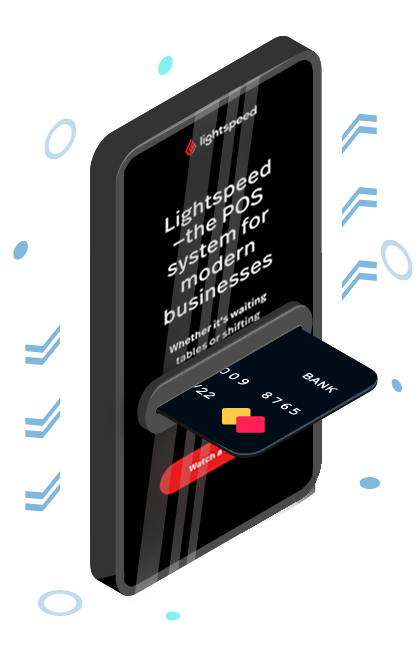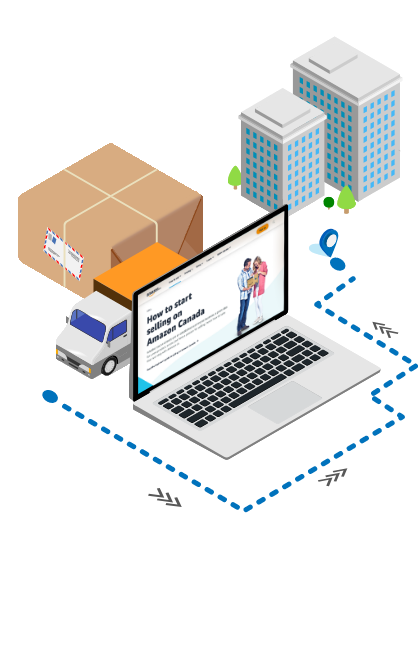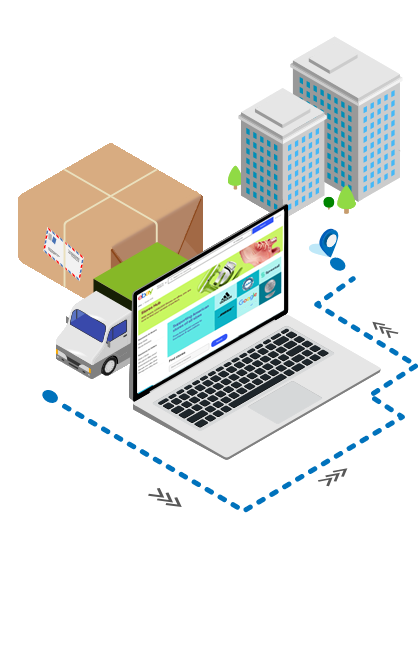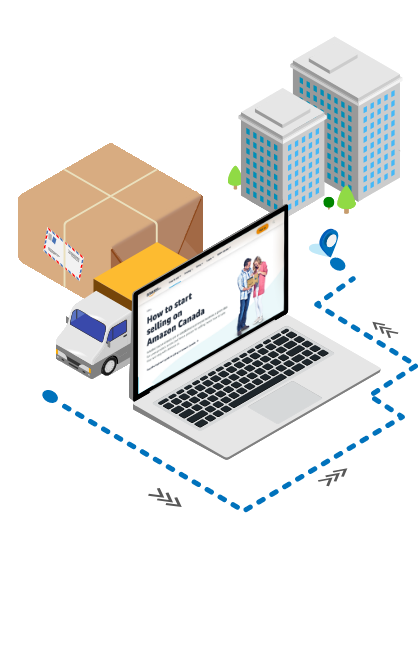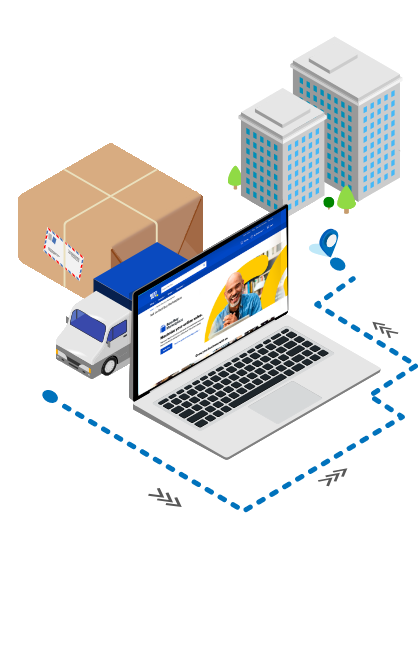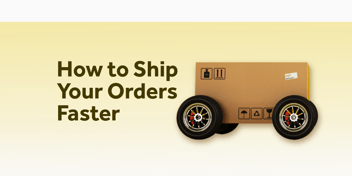How To Ship Your Pallets Cross-Border
Expanding into cross-border shipping for any Canadian business is a noteworthy milestone. The potential to expand one’s business into the US market is a goal that most, if not all Canadian entrepreneurs share. With ClickShip’s LTL at Checkout functionality, that potential has never been closer for eCommerce business owners!
However, like any major milestone in business, growth beyond the Canadian border can also be daunting. As with any form of international shipping, moving freight cross-border presents new, unique challenges that, if not properly navigated, can turn into much larger problems for your business.
With that in mind, today on the ClickShip blog we’ll be going into the finer points of cross-border freight shipping and giving you the tools to move your freight across the 49th parallel with ease and efficiency.
Domestic vs. Cross Border Shipping: What’s the Difference?
| Domestic | Cross-Border | |
| Required Documents |
|
|
|
Shipping Costs |
|
|
|
NMFC Codes |
|
|
| Restricted and Limited Goods |
|
|
Accuracy is Everything with Documentation
Customs authorities require proper documentation for shipments crossing into the United States, as well as information about everything being shipped.
Including the proper documentation to border representatives will ensure that they can easily do their job avoiding hindrances or delays for you and the driver. You will require the following documents:
Certificate of Origin
A document declaring a shipment’s country of manufacture. Required as part of the United States Canada Mexico Agreement (USMCA). You can view a sample certificate directly on the Canada Border Services Agency website.
Customs Invoice
A document declaring the quantity and value of goods contained in a shipment. Sometimes known as a Pro Forma Invoice.
Bill of Lading
A document that acts as a deed of title, as well as a contract between the shipper, consignee, and carrier.
.png?width=990&name=MicrosoftTeams-image%20(272).png)
Clearly Label and Organize Your Goods
After you've confirmed that your goods can be exported to the US, you'll need to determine the tariff classification number. The combination of the country of origin and these numbers will help you determine the cost of the duties you will pay when importing.
Typically, a customs broker will be able to identify which tariff classification will apply to you. You can, however, determine your classification through the Harmonized Tariff Schedule Search.
It is best practice to label all goods clearly and accurately on your shipment, as if customs authorities select your shipment for inspection, clear, accurate labelling will prevent any confusion or suspicion that may result in your shipment being delayed, or even seized.
.png?width=990&name=MicrosoftTeams-image%20(270).png)
Estimate the Duties and Taxes
With ClickShip’s LTL eCommerce integrations, some administrative fees associated with your cross-border shipments will be applied directly at checkout. Duties, however, will not be among them.
Customs duties are calculated as a percentage when shipping goods to the United States. The Harmonized Tariff System establishes duty rates for nearly every item that one could ship.
This does not mean, however, that determining duty rates is an easy task. Many variables can affect duties, and thoroughness and diligence are key in assuring that your shipment is not held at the border on account of unpaid duties.
It is worth noting that, in some cases, one may not need to worry about duties and taxes. If a shipment falls within the de minimis value of $800 USD or less, then in most cases that shipment will be exempt from duties.
.png?width=990&name=MicrosoftTeams-image%20(271).png)
Understand Freight Class and NMFC Codes
Freight class is a method of classifying Less-Than-Truckload (LTL) freight being shipped within the US or into the US from Canada. It is also used for US carriers who have NMFC (National Motor Freight Classification)-based pricing.
An NMFC code is assigned to each type of good that is shipped. While density is the primary determinant for a product’s NMFC code, this system divides freight into 18 different classes that factor in multiple characteristics such as density, value, handling characteristics, and claims susceptibility.
Not sure where to find NMFC codes? The National Motor Freight Traffic Association (NMFTA) has charts for purchase directly on their website.
.png?width=990&name=MicrosoftTeams-image%20(269).png)
Hire a Customs Broker
If the majority of your shipments are eligible for a de minimis exemption, this may not apply to you. If, however, you ship LTL, it could be essential.
As mentioned above, a customs broker can take much of the guesswork and legwork out of your cross-border shipping journey. Among their responsibilities, a customs broker will calculate the duties and taxes owed on a shipment and will serve as a liaison between everyone involved in the shipment. Typically, your freight broker will prepare and present the necessary customs release documents to said government agencies.
Further, your broker will have information concerning any goods you may be shipping that were not manufactured in Canada, as these may be subject to additional tariffs.
ClickShip Helps Push Your Shipping Further
Whether your business is shipping LTL or courier, domestic or cross-border, ClickShip offers you the tools to manage that shipping easily and intuitively.
Our all-in-one platform offers you discounted rates from North America’s leading couriers, seamless integration into leading eCommerce platforms and marketplaces, end-to-end tracking, and so much more! Best of all, we offer this total shipping solution for zero upfront or monthly fees!
Contact one of our shipping experts Monday to Friday, 9am to 5pm EST at 1-877-335-8740 or by email at customercare@clickship.com and let ClickShip get your business wherever it needs to be for less!

Written by Brandon Draga
Brandon Draga is a full-time content writer at Freightcom, the leading shipping solution for businesses in Canada. When Brandon is not writing content to help businesses with their shipping needs, he can be found at local skate parks or writing fantasy novels.
Learn how ClickShip can help speed up your fulfillment process with our innovative, all-in-one shipping solution.
Focus on running your business. We’ll ship orders for you — as soon as they come in.

